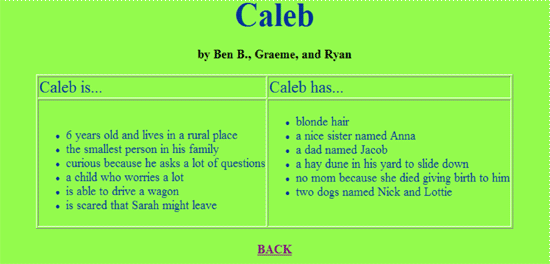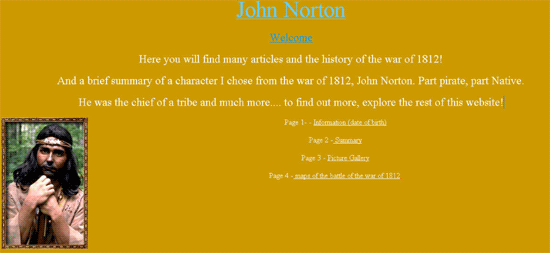
TEACHER PROFESSIONAL GROWTH IN AN AUTHENTIC LEARNING ENVIRONMENT
Howard Slepkov
Brock University, St. Catharines
Abstract
This study involves GrassRoots , a web-based program, designed to motivate schools to learn how to use an internet access point in the service of student growth. As consultant to the project, the author describes his task of participant recruiter, facilitator and data collector. Primarily, he examines what capacities or abilities the learners and teachers brought to the project, w hat conditions facilitated or detracted from their journeys, the outcomes of these journeys, and next steps of this unique form of professional development.
Introduction
Research continues to suggest little progress is being made in effecting sustained positive change in the integration of computers in classroom teaching and learning (Christensen, 2002; Cuban, 2001; Fullan, Hill & Crevola, 2006; Means, 2000/2001) in both elementary and secondary school. There have been many instances of research-based programs that have aimed to rectify this situation. These have had very limited goals, using very specific sets of tools used under well defined conditions. As well, boards of education have devoted millions of dollars to support consultants and special assignment teachers charged with the task of networking with schools and convening stand-alone workshops. Despite these many initiatives, little has changed and classrooms exist everywhere with unused or underused machines.
It is the fact that some teachers make few changes over time that concerns researchers (Hargreaves & Fullan, 1992). Hargreaves (1992) partially explained this by suggesting that the quality and flexibility of teachers' classroom work is closely tied up with the course of his or her professional growth, the way he or she develops as a person and as a professional. Little (1993) suggested that one reason professional growth for teachers is problematic is because of the immediacy of the classroom. Specifically, day-to-day events make it exceptionally difficult for progress to be made by the teacher towards his or her own learning goals. This immediacy of the classroom environment and the demands this puts upon any teacher's time does not sufficiently account for the gap in expertise between the teacher who makes considerable changes and the teacher who does not (Sykes, 1999).
Professional development activities designed to enrich and further enhance the professional growth of teachers have, in the past, been scheduled by administrators to work around the classroom timetables and needs of teachers (Guskey, 2000; Guskey & Huberman, 1995). However, short and intermittent periods of in-service that rely on teachers to go back to their classrooms, and, in isolation, to implement that with which they have been presented with during their professional development activities have yielded few positive results (Darling-Hammond, 1997). In a 1996 longitudinal study of the teaching profession, Darling-Hammond revealed the poor quality of teacher preparation and professional development in general. Fullan, Hill and Crevola (2006) further document the lack of change in the teaching profession despite repeated attempts at reform.
These findings, documented in the literature, were validated for me by my own experiences. I was, before I retired, the technology consultant in a mid-sized school board in Southern Ontario charged with helping teachers acquire new skills and effect change in computer integration. I searched for ways to make the use of the technology complement whatever teachers were doing in their classrooms. Unless the programs I was advocating fit the needs of a specific teacher at a particular time, seconding groups of teachers during the day or instructing them at the end of an already very full day would not result in any meaningful change, I had observed time and time again. The literature on cognition and learning suggests that internal motivation to learn something new is far more important than any external motivation a board, for instance, could provide (Deci & Ryan, 1985; Pintrich & Schunk, 2002). It goes on to suggest that teachers will be amenable to learning anything or adapting any change that can be shown to result in enhanced student learning (Cuban, 1986). Like any classroom teacher, therefore, I was constantly searching for ways to properly motivate the teachers I served. I needed to show them that the efforts they would put forth would make a difference in the learning of their students. Fortunately, I found one such hook in a program called GrassRoots .
GrassRoots as an Authentic Learning Opportunity
GrassRoots was a program organized by SchoolNet, itself an at-arms' length agency fully funded by the federal government. SchoolNet began as part of the official government policy to ensure that every school in Canada had an Internet access point (Kitagawa, 2001). GrassRoots was designed to motivate schools to learn how to use that Internet access point in the service of student growth. The idea was to reward classrooms that used Web pages as culminating performance tasks to display new learning in whatever subject area the teacher deemed appropriate at that time. Students would do research on any curriculum topic and rather than submit duotangs or project boards or build models or deliver speeches, Web pages would be created displaying that newly acquired knowledge as a way of consolidating learning. These would be linked into a greater whole creating a Web site on that topic with links among and between the pages wherever relevant. All of this work was to be undertaken and completed by the students under the leadership and guidance of their classroom teacher. Obviously, there was then an assumption that teachers already possessed the skills required to organize, manage, create, and complete this project with their students, or, were willing to become proficient at such a series of tasks.
How did I recruit teachers for GrassRoots projects? As consultant, I was in continuous communication with the various stakeholder groups through a variety of modalities, including e-mails to group distribution lists advocating this or that program or this or that in-service opportunity and a technology newsletter that went to the entire system in both print and e-mail. My name appeared as the contact person for every staff development opportunity that involved computers in any way and fliers inviting staff were always prominently displayed. Furthermore, sometimes as mandated by the Ministry of Education and sometimes with funds provided by my board, I convened and delivered entire series of workshops to teachers who were seconded to implement one technology-based initiative or another. My reputation had clearly been established and so, relying on that good will, I used these same communication tools to recruit teachers to take a very demanding journey of professional growth. One additional recruitment selling point was that GrassRoots and its primary goal of displaying new learning through multimedia information posted to the Web linked directly to my board's comprehensive literacy initiative and these links were emphasized as well.
Sources of Data
Over the course of two years, therefore, I enlisted over eighty elementary and secondary teachers to complete one or more GrassRoots projects. Agreeing to participate in this project opened up a door to a considerable amount of "authentic" professional development (Harris & Grandgenett, 2002; Means & Olsen, 1994). All new learning by teachers, of necessity, happened while they were working with their students in their classrooms. They had to apply to GrassRoots to participate and that application process was rigorous, demanding, and time consuming. They had to indicate, in advance, what subject areas their classroom project would address and each project had to address at least two. Furthermore, they had to identify the specific Ontario Curriculum expectations the new learning of their students would be addressing. They had to outline how students would show leadership in learning not just academic goals but, as well, the technical skills that would be required to complete their work. Finally, they had to provide a time line of when each phase of the project would be completed and, generally, the time frame was no longer than one full semester or term. From start to finish, participation in GrassRoots meant a lot of new work for the classroom teacher and depended upon his or her ability to learn this quickly so that they could provide the leadership and guidance for their students almost immediately.
My role as the guide on the side for these projects was equally as rigorous as that of the classroom teacher. It brought me into a very close working relationship with every one of the teachers who indicated an interest in participating and working with those same teachers until they either dropped out along the way or worked to completion of the entire process. Once a project was actively being worked upon, the important thing was to offer support in any way that was necessary to facilitate the work of the classroom teacher. Support and coaching, depending upon the participant's need, might have included:
- Visiting schools and helping teachers develop a vision, define the subject areas, narrow down the curriculum expectations being addressed, and determine how complicated from a technological perspective they were prepared to allow the work to become, and then
- Helping the teachers complete the online application and proofing and accepting on behalf of GrassRoots each project individually, ensuring compliance with the very tight guidelines provided by the GrassRoots directors.
- facilitating in-services on the fundamentals of Web page design,
- visiting schools to help teachers who needed more than a few hours of intensive instruction at the various phases of the project,
- answering the many e-mail and phone messages concerning the specifics of the projects as they unfolded in the schools,
- facilitating access to whatever hardware or software resources might be required by these teachers as they worked through their projects,
- working in classrooms engaged in completion of their Web designs as an assistant to the classroom teacher,
- helping each teacher take their completed projects and post them online, and lastly,
- ensuring that each project was completed in a timely fashion and met the specifics of the original application.
These various elements of support had to be provided in a timely fashion so as to keep projects ongoing and relevant. If one thinks about that, it is not any different than what happens in a classroom engaged in project based learning. The only difference here was that my classroom was the entire board's geographic area.
Action Research as a Methodology
By happenstance, during the time period in my professional life when I was most involved in orchestrating these projects, I was also engaged in my private life in the pursuit of a Doctorate in Education. While I was spending my work days teaching others so that they could use the technology the way I did, I was, in my evenings, reading and doing research into the cognition and learning processes facilitating this learning (Caine & Caine, 1991; Donovan, Bransford & Pellegrino, 1999). My ongoing review of the literature provided me with profound insight into the processes these elementary and secondary teachers I was working with were going through. I came to see that they, as well as their students, were engaged in constructivist knowledge creation (Brooks & Brooks, 1993; Niemi, 1997; Steffe & Gale, 1995) using problem based learning as a teaching method. This meant that the teachers as well as their students, by focusing on a big question or problem and being empowered to solve that question or problem in a manner or way that was chosen by them and not some one else, were free to learn in divergent directions rather than all on the same page at the same time. I also came to see that I was functioning as the teacher or guide on the side in this learning journey of theirs just as they were being encouraged to function exactly the same way with their students. It became apparent that the work I was engaged with needed to be the subject of my dissertation and the questions I needed to ask myself and do research to find the answers to were:
- What capacities or abilities did they (as learners/teachers) bring along with them on their journey?
- What conditions were in place that facilitated or detracted from their journeys?
- What did they see as the outcomes of these journeys for themselves and for their students?
- What did these teachers see as their next steps?
Wells (1994) contended that action research, as a methodology, can contribute to the creation of professional learning communities directed towards the enhancement of student and teacher growth and sustained educational change. Calhoun (1993, 2002) agreed that this methodology is a powerful tool for improving the practice and the health of an organization. She suggested that one can use the principles of action research whether one is an educator working alone in one's classroom or involved with a team of people from several different locations within a jurisdiction. Caro-Bruce (2000) took this one step further by suggesting that action research enables one to construct knowledge about education with teachers at the centre. Her argument was that, when teachers use action research to engage in intellectual pursuits, their sense-making reflection contributes to their becoming lifelong learners. Action research as a methodological approach to my dissertation research was perfectly and ideally suited to the circumstances and conditions of the GrassRoots project process as well as to my hoped for outcomes as a result of the completion of those projects. Specifically, I was interested in whether this approach to professional development as the guide on the side for a group of teachers engaged in a tremendous amount of authentic educational change would have a successful conclusion and result in transformational change in classroom teaching practices where other approaches such as secondment or after hours in-services were not being successful.
The teachers that I was working with on GrassRoots projects and who allowed me to look in depth at their learning journeys became the subjects of my dissertation research. At this point in the evolution of the project over several years, there were 36 teachers, 24 of whom provided me with written participant consent forms. The data artifacts I pored over and subsequently analyzed to look for the answers to my questions were the e-mails and phone messages that I had logged over the course of the project work, the responses to the application to participate in a GrassRoots project, the observations I made and later recorded when we met and worked together, the impressions left by their finished products, the final report submitted by each classroom teacher to the GrassRoots federal agency, and most importantly, their responses to an online quiz which I had designed and which they completed. (See Appendix A) That so many of my colleagues consented to all the additional work involved in being my research subjects, on top of the work involved in putting together a GrassRoots project and seeing it to conclusion, attests to the professionalism and the dedication they had to "getting it right" for their students. (Once again, I acknowledge the deep debt of gratitude I have to these colleagues and friends.) It also speaks volumes as to the skill set and motivation they brought along with them on their journeys.
Given the many different sources of data, the problem became, for me as a researcher, one of making sense of all the data. As Adey (2004) acknowledges, personal observations must be supported by other sources of data in order to verify and validate the subjective assessments made by the researcher. In order to validate, triangulate, and support my subjective observations, I searched each set of data for statements relating to the professional journeys of the participants, and then categorized those responses as to which of the five research questions the data were addressing. I was following a methodology similar to that defined by Corbin and Strauss (1990) as open, axial, and selective coding. As supported by Creswell (1998), this data analysis strategy suits some forms of qualitative research because it provides a procedure for developing categories of information, making the connections between those categories, creating a theoretical construct that connects the categories, and then bringing the constructs together in a set of theoretical propositions or a "story" described by the data. This was the methodology used in order to come to some conclusions about the learning journeys of my subject participants.
Observations
The educators I worked with were amazed at how much they and their students learned as a result of their participation in GrassRoots . In the online questionnaire referred to above, participants not only raved about what had been accomplished, but acknowledged that they and their students together had learned a tremendous amount and never just about technology either. They came to have a better appreciation of how problem-based learning could lead to richer and deeper understandings of some topics as well as an excitement about learning that is often absent when working on traditional paper and pencil projects. When asked about the learning of their students, in their frequent interchanges with me when I visited or spoke to them or had e-mail from them, they referred to the enthusiasm and excitement and always saw this in themselves as well as in their students. They reaffirmed these comments and observations in the response to the questions in the e-survey about future plans. Each and every one of them acknowledged the work that had been involved but also reaffirmed their plan to do the same thing again now that they knew what they needed to know and be able to do.
The participants all learned about the specifics of creating Web sites that profiled and showcased student learning on a wide variety of topics. They learned how to take the students from independently chosen research questions, to depicting the new information located as Web pages, to linking the Web pages thematically, internally and externally, to create a viewable Web site, and then how to make that Web site go live on the Internet so that students, family, and teachers all could see the results of their efforts. Although the finished products (the Web sites each participating classroom created) were off limits as artifacts of the research for privacy reasons, they attested to their unqualified success. Examples depicting what some of these GrassRoots finished products looked like are included here to give the reader an idea of what the end result of so much work actually looked like. Names of schools have been changed to protect the privacy of the staff and students involved in these projects.

Diagram 1 - Lists thematically related topics around a novel study. Each line would take the viewer to that page related to the novel.

Diagram 2 - Character description from the same novel study and linked to from the page above.

Diagram 3 - Another classroom depicted information about the War of 1812 and included pictures of the main characters to illustrate their pages.

Diagram 4 - Another site developed as a result of a novel study and each question links to a page with the appropriate information.

Diagram 5 - Each of the pictures above and the ones not included in the screen capture led to information about each of the prime misters of Canada .
These represent the finished products and were the source of a tremendous amount of pride although the steps to get to these results took many extra hours and days and varying amounts of support depending upon the entry level and speed with which new skills were mastered.
The participants in this study were uniformly in agreement that the entire process would not have come to a positive conclusion without the help they received at points of frustration from friends, family, colleagues and me, especially, as their guide on the side. In fact, the data analysis reinforced the hypothesis that, in many ways, there was a parallel learning process that the teachers were engaged in, along side their students (Sweeney, 2003). Just as they were guiding their students through the completion of a constructivist learning activity, I was guiding them through their own professional growth. Sometimes this meant a visit to the classroom teacher before, after or during classroom time to help solve a problem or teach a new skill. Once in a while, I was able to help locate a nearby expert and put that expert in touch with the particular classroom teacher. These experts might have been other classroom teachers or they might have been technical support staff from the board's IT department. In one particular instance, an entire class walked to a nearby school and partnered with an already trained class of students. In another, the class went to the nearby high school and sat with actual graduates of that elementary school engaged themselves in learning programming and Web design. One individual teacher took all her problems home to her very capable son who worked his magic on his mother and her students. In another school, one particularly skilled teacher became the mentor for several other teachers and they collectively worked on a series of Web sites all related to poetry. Once all the Web sites were completed, help was also needed to act as an intermediary with the central office IT staff that had to upload and facilitate the process of displaying the Web sites live and linking to them from the board's home page as a way to profile the work completed.
While the literature acknowledges the journeys of their students as constructivist knowledge creation, it also identifies this process the teachers were going through as authentic professional development (Bailey, Curtis, & Nunan, 2001). It behooves the research community to think of the teachers' journeys as constructivist knowledge creation and to see those journeys as part of a career-long process of professional growth (Becker & Ravitz, 1999; Nunan & Lamb, 1996). The teacher identified above who collaborated with a group of teachers in his school to create a series of interrelated Web sites began working on the skills of Web site creation with me well before this study took place. However, it was his idea to encourage his colleagues to work along with him and he followed through on his plan of action. After seeing the results of his work, he responded to the questions concerning future plans that he intended to continue on the course he had already begun. Several of the teachers I worked with before and during the period of actual data collection for the action research participated off and of in project work as their circumstances, both personal and professional allowed. It wasn't always easy for any one particular classroom teacher to be able to engage in such a project each and every year. Professional assignments change, personal circumstances intervene. One of my colleagues desperately wanted to participate but just didn't have timetable that particular year that made participation easier. Another one didn't have a class ready to deal with challenges participation was likely to pose. A third became quite sick at the very beginning of the research period and had to take an extended medical leave. Needless to say, just like in any group of students, there were those who set out with the best of intentions and didn't even complete the process to conclusion. One of the most important conclusions of my research was this idea of the consultant as teacher and the importance of seeing the on-going organization and facilitation of professional development of teachers through the lens of classroom instruction and learning as it effects students in desks. This is one observation and conclusion that would not have been made, I am sure, if not for the fact that this was action-based research.
As a doctoral candidate, looking at the collected data through a scientific lens, my analysis of the journeys of professional growth of the participants in GrassRoots suggested that opportunities for authentic, classroom based learning would be more than accepted by motivated classroom teachers, as long as the topics were important and timely to them in terms of their classroom program. Furthermore, the ultimate success of their journeys depended, to a large extent, on someone who was, to them, the guide on the side, the teacher to whom they could turn when they needed help over whatever obstacle was troubling them (Atkinson & Claxton, 2000). My use of the methodology of action research enabled me to come to those conclusions and support that through the data analysis.
Wearing two hats as I was at the time, that of researcher and consultant, my observations of the process were made through two lenses, not one. My role as researcher was able to observe and legitimately conclude that authentic professional development was a very important tool in the professional development repertoire. As an educator, I was reminded time and again of how important it is to have centrally placed consultative staff that have some longevity in their roles and are able to form relationships of some depth and persuasiveness. Teachers, or for that matter, any group of professionals, have to be able to form personal relationships with their students, no matter what their ages. To be successful as guides in any learning process, whether with technology or some thing else, they must be seen to be available, reliable, dependable, resourceful, supportive and non-judgmental. If we are to realize the goal of transformative professional development for teachers in the use of technology specifically, but in the methods used for teaching and learning more generally, we must strive to ensure that such individuals are engaged in the sort of learning process (Cranton & King, 2003) that GrassRoots represented.
Discussion
My action research began with four research questions which have been answered. The learning journeys of the GrassRoots participants have been analyzed and revealed much about what brings teachers to embark on a course of professional growth; how they, as learners, rely upon others to support their journeys, and how self-assessment and reflection can lead to successful pedagogical change that impacts on classroom practice. In turn, these findings have led to a model which can be used widely to guide professional development practices.
As a practitioner of professional development, I have come to realize, and the results of this research affirmed, my perceptions concerning the importance of applying cognitive theory to the structure and practices of any proposed offerings. Before any teachers are seconded or any in-services are planned, the reasons for doing so must be carefully considered and the teaching strategies determined that will yield the desired learning. How best should the new learning be acquired? What will the culminating performance task be to indicate that teachers have indeed learned what is expected of them? What classroom behaviours by their students will be indicators of success? How frequently will the sequence of sessions be offered? Who can best educate the teachers in the skills and classroom behaviours to be acquired? Does that individual have the resources necessary to be successful in the task? Is there a plan in place to ensure that the opportunity for growth is going to be extended to more than one group of individuals? Who will insure that these efforts are part of a wider vision of the change process? These are only a few of the questions that ought to be posed in order to ensure that professional development is organized for success and change.
As a researcher, gaps in the literature have been found that require further explication. Just as constructivist knowledge creation leads to the revelation in gaps of what is known and what is not known, this work has led to new questions which can be used to guide further research. For example, one of the most questionable findings is whether, given replication of the GrassRoots process as described, these participants would have reflected the changes in practice that they declared would have occurred. In tandem to that is the argument advanced earlier that there needs to be continuity in the course of professional development being offered to any specific group of teachers. If the goal of a specific program of in-service is to promote and advance sustained change, new research ought to be conducted using the model suggested by this research and spanning more than 1 or 2 years.
Currently in many jurisdictions in North America and elsewhere, much effort is being expended on developing the skills required by classroom teachers leading to the integration of technology into their classroom programming. Opportunities could be developed using the model advanced above and applied to groups of these teachers to establish whether or not the model of professional development, when replicated, in fact still works. Can any educational jurisdiction organize professional growth opportunities in such a way that sustained change will result? The need to be successful in such efforts is there, as suggested so frequently by the literature referenced in conjunction with this research. Can the current state of "little or no change" be reversed?
Aside from the generative use of the model, there are parts within this framework that suggest gaps in what is known and what is not known. With reference, for instance, to the role of the teacher in professional development, there are a number of directions that one could take in new research. What are the qualities of a successful educator of teachers? Does gender make a difference? Is there a maximum "class" size? Can teachers be trained in a specific set of skills to help them become successful professional developers? There is also the question of subject matter. What specific knowledge and/or skill expectations require more in-depth opportunities for professional growth?
In Conclusion
Darling-Hammond (1997) found that despite the allocation of considerable resources towards ongoing professional development, little has changed in the quality of classroom teaching. The results of this research perhaps point to a possible explanation, one which the literature does not seem to explore. My research has revealed the importance of considering both the pedagogy underlying and the organizational details facilitating teacher professional development. It is not enough to think about professional development in terms of the manner in which it is delivered, that is in brief, single sessions or seconded all-day events, after the school day, or during the school day. These details are important, but only as part of a larger picture, as indicated by the model I have advanced above.
The success of the GrassRoots project as a medium by which teachers participating gained new skills and knowledge which they then passed on to their students makes a convincing case for including elements of both pedagogy and organization in any long-term professional development initiative. Pedagogically, this means the application of what is known about cognition and learning to the learning of teachers. It reaffirmed the fact that, given any learning opportunity, some learners will do just fine on their own while others will need more encouragement. Teacher capacity to learn and teacher willingness to learn are only somewhat connected. Other variables do play an important role and no two journeys are completely identical. If the path to sustained school change is through enhanced teacher ability, then a way must be found to connect our knowledge of teaching and learning to professional development.
However, even the most skilled practitioner will make little difference with his or her students if there is no attention paid to other elements in that same teaching and learning environment. The provision of sufficient opportunity to avail oneself of a specific professional development initiative, a curriculum guiding the individual elements offered by any jurisdiction rather than a collection of disparate and discrete topics, and facilitation by a well-trained, experienced, and motivating educator who will be able to work with any group of teachers until they have mastered the skills being transferred are all necessary components. One of the foundations of the vision for education anywhere is the goal of graduating lifelong learners. This same vision must be part of the process in the development of the teaching staff as well.
This then is a model of professional learning to which educators at all levels can turn as a guide in structuring professional development for teachers that might prove to be more successful and more widespread in the future. Such success might enhance the likelihood of true constructivist learning and lead to transformation of the teaching profession. The implications of this for the profession are clear. Successful teacher learning requires both pedagogy and facilitation. Only then will teachers be able to realize their learning goals. This outcome will subsequently enhance their ability to continuously assess and improve their methodology of classroom instruction and their pedagogy of teaching as reflective practitioners (Schon, 1986).






References
Adey, P. (with Hewitt, G., Hewitt, J., & Landau, N.). (2004). The professional development of teachers: Practice and theory . Dordrecht , Netherlands : Kluwer Academic.
Atkinson, T., & Claxton, G. (2000). Introduction. In T. Atkinson & G. Claxton (Eds.), The intuitive practitioner: On the value of not always knowing what one is doing (pp. 1-12). Buckingham , UK : Open University Press.
Bailey, K. M., Curtis, A., & Nunan, D. (2001). Pursuing professional development: The self as source. Boston : Heinle & Heinle.
Becker, H. J., & Ravitz, J. (1999). The influence of computer and internet use on teachers: Pedagogical practices and perceptions. Journal of Research on Computing in Education, 31 (4), 356-384.
Brooks, J. G., & Brooks, M. G. (1993). The case for constructivist classrooms: In search of understanding. Alexandria, VA: Association for Supervision & Curriculum Development.
Caine, R. N., & Caine, G. (1991). Making connections: Teaching and the human brain. Alexandria , VA : Association for Supervision & Curriculum Development.
Calhoun, E. F. (1993). Action research: Three approaches. Educational Leadership, 50 (10), 13-16.
Calhoun, E. F. (2002). Action research for school improvement. Educational Leadership, 59 (3), 18-24.
Caro-Bruce, C. (2000). Action research: Facilitator's handbook. Oxford , OH : National Staff Development Council.
Christensen, R. (2002). Effects of technology integration education on the attitudes of teachers and students. Journal of Research on Technology in Education, 34 (4), 411-433.
Corbin, J., & Strauss, A. (1990). Grounded theory research: Procedures, canons, and evaluative criteria. Qualitative Sociology, 13 (1), 3-21.
Cranton, P., & King, K. P. (2003, Summer). Transformative learning as a professional development goal. New Directions for Adult and Continuing Education, 98 , 31-37.
Creswell, J. W. (1998). Qualitative inquiry and research design: Choosing among five traditions. Thousand Oaks , CA : Sage.
Cuban, L. (1986). Teachers and machines: The classroom use of technology since 1920. New York : Teachers College Press.
Cuban, L. (2001). Oversold and underused: Computers in the classroom. Cambridge , MA : Harvard University Press.
Darling-Hammond, L. (1997). Doing what matters most: Investing in quality teaching. New York : Teachers' College, Columbia University.
Deci, E. L., & Ryan, R. M. (1985). Intrinsic motivation and self-determination in human behavior. New York : Plenum Press.
Donovan, M. S., Bransford, J. D., & Pellegrino, J. W. (Eds.). (1999). How people learn: Bridging research and practice. Washington , DC : National Academy Press. Retrieved November, 2004 from http://crossroads.georgetown.edu/vkp/resources/glossary/authenticlearning.htm.
Fullan, M., Hill, P., & Crevola, C. (2006). Breakthrough. Thousand Oaks , CA : Corwin.
Guskey, T. R. (2000). Evaluating professional development. Thousand Oaks , CA : Corwin Press.
Guskey, T. R., & Huberman, M. (Eds.). (1995). Professional development in education: New paradigms and practices. New York : Teachers College Press.
Hargreaves, A. (1998). The emotional politics of teaching and teachers' development: With implications for educational leadership. International Journal of Leadership in Education: Theory & Practice, 1 (4), 315-336.
Hargreaves, A., & Fullan, M. G. (Eds.). (1992). Understanding teacher development. New York : Teachers College Press.
Harris, J., & Grandgenett, N. (2002). Teachers' authentic e-learning. Learning & Leading with Technology, 30 (3), 54-58.
Kitagawa, K. (2001). Building innovative capacity in the classroom: A study of the impact of the SchoolNet GrassRoots program on members of SchoolNet's network of innovative schools. Ottawa , ON : Information Distribution Centre, Communication and Marketing Branch, Industry Canada . Retrieved May 2004, from http://www.schoolnet.ca/grassroots
Little, J. (1993). Teachers professional development in a climate of educational reform. Educational Evaluation and Policy Analysis, 15(2), 129-151.
Means, B. (2000/2001). Technology use in tomorrow's schools. Educational Leadership, 58 , 57-61.
Means, B., & Olson, K. (1994). The link between technology and authentic learning. Educational Leadership, 51 (7), 15-18.
Niemi, H. (1997). Active learning by teachers. In D. Stern & G. L. Huber (Eds.), Active learning for students and teachers: Reports from eight countries (pp. 174-182). Frankfurt Am Main : Peter Lang.
Nunan, D., & Lamb, C. (1996). The self-directed teacher: Managing the learning process. Cambridge , UK : Cambridge University Press.
Pintrich, P. R., & Schunk, D. H. (2002). Motivation in education: Theory, research, and applications. Saddle River , NJ : Merrill Prentice-Hall.
Schon, D. A. (1986). Educating the reflective practitioner. San Francisco : Jossey-Bass.
Steffe, L. P., & Gale, J. (Eds.). (1995). Constructivism in education. Hillsdale , NJ : Lawrence Erlbaum.
Sweeney, D. (2003). Learning along the way: Professional development by and for teachers. Portland , ME : Stenhouse.
Sykes, G. (1999). Introduction: Teaching as the learning profession. In L. Darling-Hammond & G. Sykes, G. (Eds.), Teaching as the learning profession: Handbook of policy and practice (pp. xv-xxiv). San Francisco : Jossey-Bass.
Wells, G. (Ed.). (1994). Changing schools from within: Creating communities of inquiry. Toronto , ON : OISE Press.
Biographical Note:
After spending 23 years in the classroom, Dr. Howard Slepkov acted as a consultant for the District School Board of Niagara for the next seven. While in that position, he became involved in the delivery of professional development activities for teachers for the board as well as for Brock University . Since completing his doctorate in 2006, he has become a sessional instructor for both Brock's and Niagara University 's Faculties of Education. He can be reached at the Faculty of Education, Brock University , 500 Glenridge Avenue , St. Catharines , Ontario . L2S 3A1. Email: sleppysr@slepkov.ca
